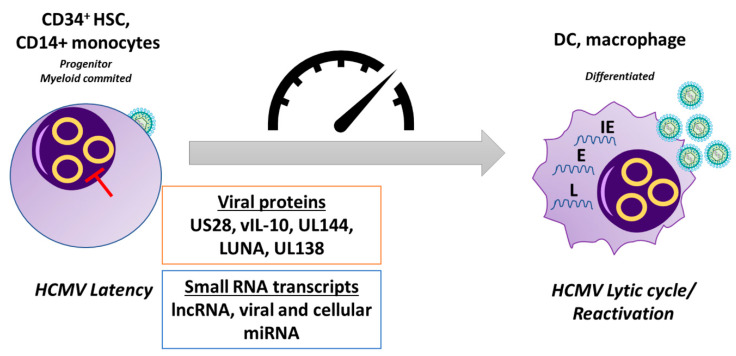Figure 4.
Latency. Following primary infection, HCMV can establish latency in CD34+ myeloid progenitor cells and is carried down the myeloid lineage. In latently-infected CD34+ cells and monocytes, there is a targeted suppression of lytic viral gene expression. HCMV utilizes several viral proteins and small RNA transcripts, including viral and cellular miRNAs, during latent infection to alter the signaling environment within the cell to maintain the status of latency. Differentiation of these cells to macrophages and DCs causes the derepression of the MIEP and allows initiation of the lytic transcription program, which involves a temporal cascade of viral gene transcription, allowing reactivation of de novo virus production. HCMV, human cytomegalovirus; DC, dendritic cell; HSC, hematopoietic stem cell; lncRNA, long non-coding RNA; IE, immediate-early; E, early; L, late.

